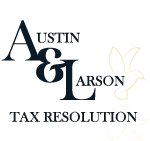Business owners face countless challenges on the road to success—whether it’s attracting top talent, controlling expenses, or discovering the best avenues for growth. Among these challenges, one that often looms large is filing taxes. Regardless of the type of business you operate, tax season can feel like one of the most overwhelming tasks to navigate each year.
Meeting your tax responsibilities in a way that’s both efficient and advantageous for your business can feel like a monumental task. However, with the right approach, a well-thought-out plan, and some preparation, you can make this process much more manageable, allowing you to focus on other areas of your business with confidence.
Consulting with a tax professional who understands your business’s unique needs is key to staying compliant and setting yourself up for success. Before making decisions about structuring your business or developing your tax strategy, it’s essential to get expert advice. For now, here are some general tips to help you and your business confidently gear up for tax season and ensure you’re prepared for whatever comes your way.

Gathering Essential Tax Documents
Your tax situation is as unique as your business, but certain essential documents can help make tax season much smoother. Being well-prepared with these records ensures that your tax filings are accurate and complete, reducing the chances of delays or audits.
To begin, it’s crucial to maintain a comprehensive log of your business’s income and expenses. Using accounting software can simplify this process by keeping everything organized in one place. However, even if you rely on a digital system, it’s essential to keep physical records of key items such as sales receipts, bills, invoices, and canceled checks. These documents play a critical role in verifying and calculating your tax obligations, so ensure they are stored securely and are easily accessible when needed.
Now, let’s take a closer look at the specific types of documents you should maintain for tax purposes.
- Gross Receipts: Your business’s total income is one of the most significant factors in determining your tax liability. To document your gross receipts, you’ll need to collect evidence such as cash register tapes, records of credit and cash sales, invoices, and 1099-MISC forms. These documents help establish a clear picture of the revenue flowing into your business and are essential for accurate tax filings.
- Purchases: In addition to tracking income, you must keep a record of any items you purchase and resell, as well as the materials or parts used to create finished products. Maintain documents showing the amount paid, who was paid, and a detailed description of the items purchased. This ensures accurate reporting and can help maximize potential deductions related to your business’s production costs.
- Expenses: Your business expenses cover a wide range of costs, from office supplies to utilities and rent. To claim deductions, you’ll need supporting documents like receipts, checks, invoices, and credit card statements. Having detailed records ensures that you can claim every allowable deduction, saving your business money during tax season.
- Travel, Transportation, Entertainment, and Gifts: If you’re deducting expenses for business-related travel, transportation, entertainment, or gifts, you’ll need a solid paper trail to back up your claims. Keep receipts, itineraries, and any other documents that confirm these purchases were for business purposes, ensuring that your deductions hold up under scrutiny.
- Assets: The assets your business owns, such as machinery, furniture, and equipment, require detailed recordkeeping. To calculate depreciation, and gains or losses from sales, maintain purchase and sale invoices, real estate closing statements, and proof of payment. Accurate documentation will not only aid in tax calculations but also help you stay on top of your assets’ financial value over time.
- Employment Taxes: For businesses with employees, it’s important to keep thorough records related to employment taxes. This includes payroll records, showing wages, benefits, and tax withholdings, as well as documentation for other employee-related expenses. Proper recordkeeping will help you stay compliant with IRS requirements and avoid costly penalties.
By organizing these records and maintaining accurate documentation, your tax season will go much smoother, and you’ll ensure your business is in compliance with IRS regulations.

Customizing Your Taxes Based on Business Structure
While recordkeeping might seem similar across different businesses, the tax specifics can vary greatly depending on the type of business entity you operate. Understanding these differences is essential to ensure compliance and optimize your tax situation.
Here’s a breakdown of common business structures and their tax implications:
Sole Proprietorship
As a sole proprietor, you run your business as an individual, meaning there’s no legal separation between you and your business. When tax season comes around, you report your business’s profits or losses on your personal federal income tax return using Schedule C. However, keep in mind that there may be other taxes involved, such as self-employment taxes, which can increase your filing responsibilities.
Limited Liability Company (LLC)
LLCs offer flexibility in how they’re taxed. By default, an LLC with multiple members is treated like a partnership for federal income tax purposes, meaning income and losses pass through to owners, who report these on their personal tax returns. For single-member LLCs, they’re generally considered “disregarded entities” for tax purposes, meaning the IRS treats them like sole proprietorships. However, LLCs can also opt to be taxed as corporations by filing IRS Form 8832. State and local tax rules may further complicate this classification, so it’s crucial to understand the specific regulations that apply to your situation.
Limited Partnership (LP)
In a limited partnership, you typically have one general partner who manages the business and takes on unlimited liability, while the limited partners contribute financially but have no control over day-to-day operations. Tax-wise, the partnership files an IRS Form 1065 and issues a Schedule K-1 to each partner, detailing their share of income or losses to report on personal tax returns. Like other entities, additional state and local taxes may apply, requiring careful planning.
C Corporation
Unlike pass-through entities, a C Corporation is a separate tax-paying entity. This structure can result in double taxation, where the corporation pays taxes on its income, and shareholders pay taxes on dividends received. However, C Corporations offer advantages, such as limited liability for shareholders and opportunities to establish employee stock ownership plans. Corporations file taxes using IRS Form 1120, but don’t forget about state and local tax filings, which can add another layer of complexity.
S Corporation
This business structure blends the benefits of incorporation with the tax advantages of pass-through entities. While S Corporations are only taxed at the shareholder level, meeting the qualifications and maintaining the requirements can be complex. They file annual returns using IRS Form 1120-S and distribute Schedule K-1 to shareholders, similar to partnerships. State and local tax rules still apply, adding additional considerations.
For more information on selecting the right business structure and its tax implications, consider consulting with a tax advisor. Making the right choice can save you time, stress, and money in the long run.

Maximizing Deductions and Credits for Small Business Owners
One of the most significant opportunities to reduce your tax burden is by taking full advantage of the deductions and credits available to small business owners. Understanding which expenses qualify can make a considerable difference when it comes time to file, and can even provide you with additional savings throughout the year.
Common Tax Deductions
As a small business owner, you can deduct a variety of business-related expenses, such as office supplies, rent, utilities, and marketing costs. Additionally, home office expenses can be deducted if you run your business from home. This deduction can cover a portion of your rent or mortgage, utilities, and even repairs related to your office space.
Other deductions to explore include those for employee salaries and benefits, business insurance, and depreciation on major assets like machinery or vehicles. Remember to keep detailed records and receipts for all deductions to ensure compliance and avoid complications.
Tax Credits for Small Businesses
Tax credits offer another way to lower your tax liability. Unlike deductions, which reduce your taxable income, credits provide a direct reduction in the amount of tax you owe. Some key tax credits include the Work Opportunity Tax Credit (WOTC) for hiring veterans or individuals from targeted groups, and the Small Business Health Care Tax Credit, which helps offset the cost of providing health insurance to employees.
Additionally, if your business invests in research and development (R&D), you may qualify for the R&D Tax Credit. This credit encourages innovation by providing incentives for businesses that create or improve products, services, or processes.
By carefully considering which deductions and credits apply to your business, you can significantly reduce your tax liability and free up more resources to invest back into your operations. Always consult a tax professional to maximize these opportunities and ensure you’re fully compliant with IRS regulations.

Planning Ahead for Quarterly Tax Payments
For many small business owners, waiting until the end of the year to pay taxes can lead to large, unexpected bills. To avoid this, the IRS requires most businesses to make estimated quarterly tax payments throughout the year. Understanding and preparing for these payments can help you better manage your cash flow and prevent financial strain when Tax Day arrives.
Understanding Estimated Taxes
Estimated taxes are periodic payments made throughout the year to cover income tax, self-employment tax, and other applicable taxes. As a small business owner, you’re typically required to pay these if you expect to owe $1,000 or more in taxes for the year. These payments are made four times a year, usually in April, June, September, and January, and are based on your projected income and deductions for the year.
Benefits of Paying Quarterly
Making quarterly payments can help you stay on top of your tax obligations and avoid late payment penalties. It also prevents you from being hit with a large tax bill at the end of the year, allowing you to manage your finances more effectively. Additionally, spreading your tax liability across multiple payments makes it easier to budget and ensure that you don’t fall behind on other financial responsibilities.
Calculating and Paying Estimated Taxes
To calculate your estimated taxes, you can use IRS Form 1040-ES, which provides instructions and worksheets to help you estimate your tax liability based on your expected income, deductions, and credits. Many business owners also rely on tax software or a tax professional to assist with these calculations.
By planning ahead and making timely quarterly tax payments, you’ll avoid surprises during tax season and ensure that your business remains in good financial standing throughout the year.
Conclusion
Preparing for Tax Day as a small business owner doesn’t have to be overwhelming if you take proactive steps. By staying organized, keeping detailed records, and understanding your business’s unique tax needs, you can navigate tax season with confidence. Consulting with a tax professional, such as Austin & Larson Tax Resolution, will provide valuable insights and help you take full advantage of deductions and credits while ensuring compliance. With careful planning, you can minimize stress and focus on the continued growth and success of your business.
Frequently Asked Questions
- What documents should I gather for tax season as a small business owner?
You should collect key documents such as income records (gross receipts), expense records (receipts, invoices), records of purchases, asset documentation, and employment tax records. - How can I reduce my tax liability as a small business owner?
Take advantage of tax deductions for business-related expenses like office supplies, rent, and utilities, as well as tax credits like the Work Opportunity Tax Credit and the Small Business Health Care Tax Credit. - Do I need to make quarterly tax payments?
Yes, if you expect to owe more than $1,000 in taxes for the year, the IRS requires you to make estimated quarterly payments to avoid large bills and penalties. - How do I choose the right tax strategy for my business structure?
The tax implications vary depending on whether you operate as a sole proprietor, LLC, partnership, or corporation. Consulting with a tax professional is essential to optimize your tax strategy. - What are common tax credits available for small businesses?
Common tax credits include the Work Opportunity Tax Credit for hiring certain employees and the Research & Development (R&D) Tax Credit for businesses investing in innovation.


Recent Comments